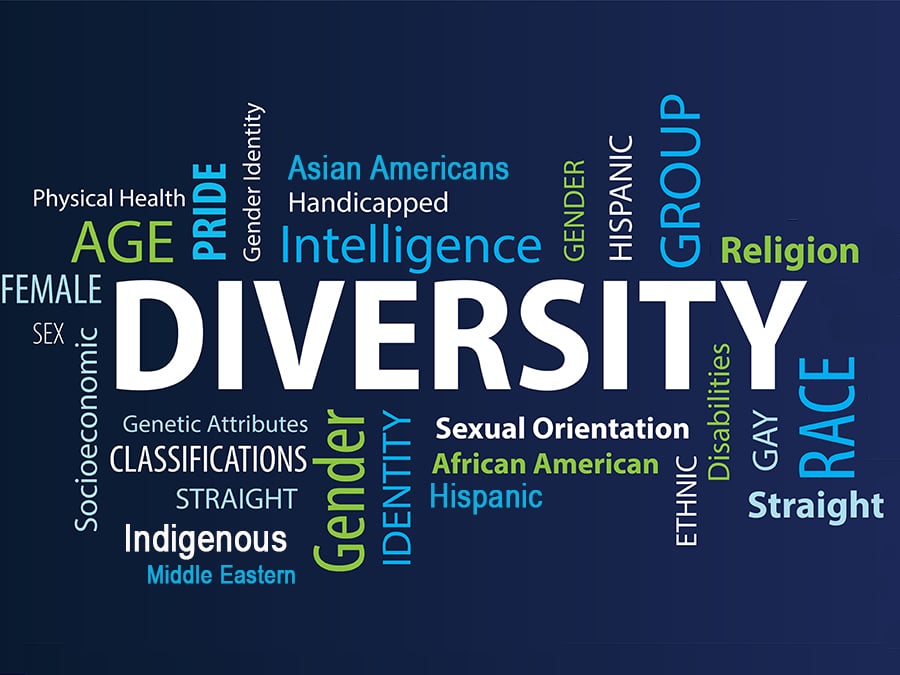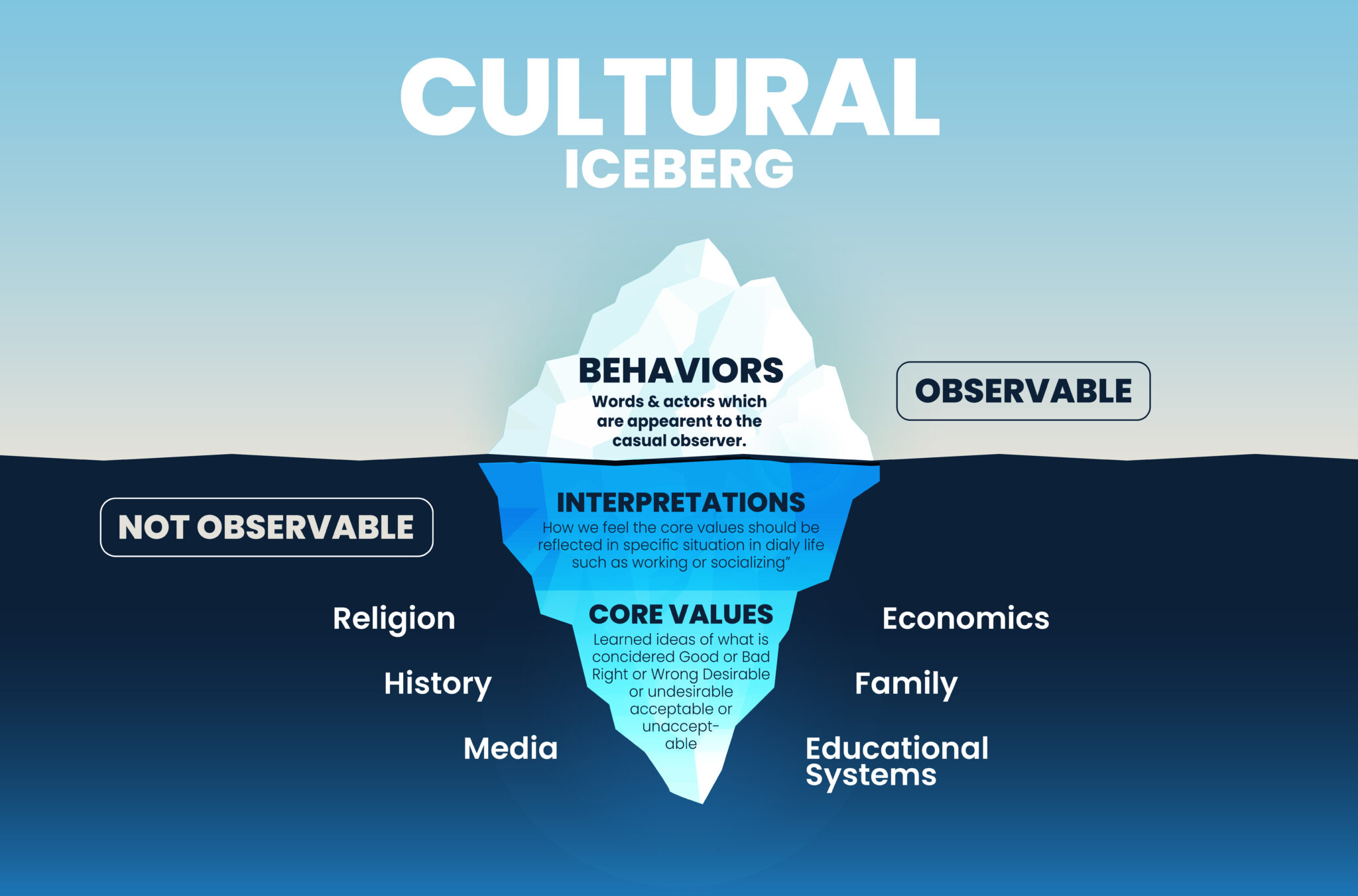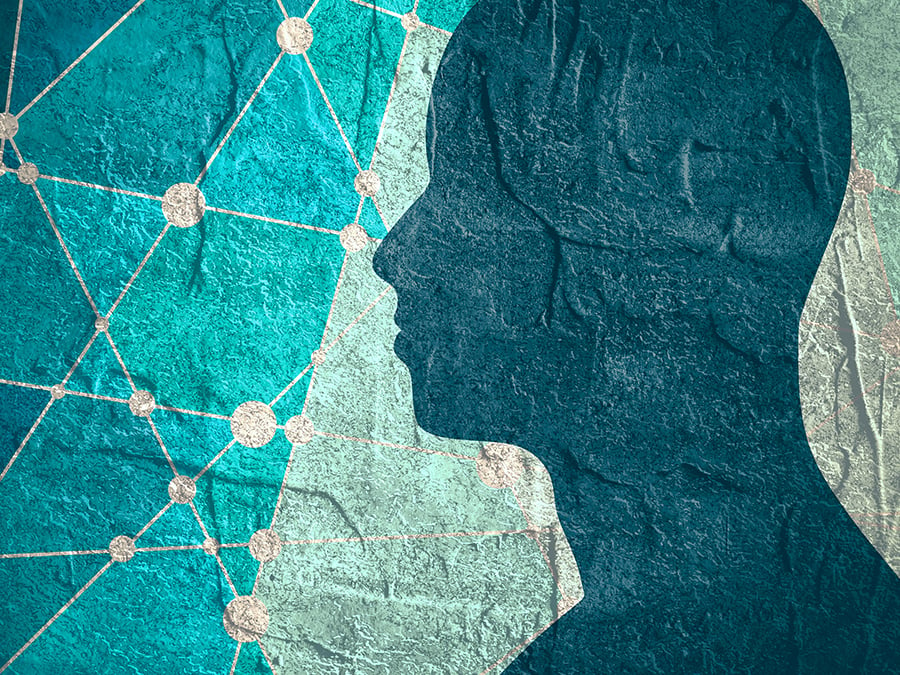1. WHO ARE MULTICULTURAL POPULATIONS?

Multicultural populations are clients that are diverse culturally in some way, whether that be ethnicity, race, or culture. Multicultural populations include BIPOC individuals, immigrants or children of immigrants, refugees, multiracial individuals, and more. Multicultural individuals also hold identities outside of their culture like age, sex, and socioeconomic status that operate in conjunction with how they perceive their experiences. They may also participate in music, dance, art, or a sport that is culturally significant to their identity. Taking an intersectional approach to your clients of color is necessary to their assessment, treatment, and healing.
Multicultural ethnicities include, but are not limited to:
- African Americans
- Asian Americans and Pacific Islanders
- Indigenous and Native Americans
- Latine or Hispanics
- Middle Easterners
There are also ways in which Eastern and Western culture differ. The terms individualistic and collectivistic reference the West and the East, respectively. In collectivistic cultures, families are at the center of an individual’s identity as well as the notion of doing what’s best for the group. In a contrasting fashion, individualistic cultures place importance on their uniqueness and autonomy. This is not to say that an individual experiences these cultures strictly as a black and white dichotomy, but rather that a therapist needs to consider the individual’s sociocultural context and how the individual interacts with the world around them based on their cultural experiences.
Individualistic versus Collectivistic:
- Autonomy vs. Family Loyalty
- Individual vs. Group Mentality
- Duty to Self vs. Duty to Group
2. WHY IS A MULTICULTURAL APPROACH IMPORTANT?

- Data reveals the United States is reaching a more racially diverse society
- There are many cultures in which seeking mental healthcare is stigmatized
- Boundaries, defense mechanisms, and healing all look different when treating a multiculturally diverse client
Therapy requires a tailored approach to each individual. When you understand the needs of a multiculturally diverse population, you have the ability to expand the range of your psychotherapy career and meet the needs of underserved communities. Data reveals the United States is reaching a more racially diverse society, so much so that minorities will soon become the majority. This means that practicing professionals need to consider how diversity affects their clients outside of the therapy room.
Consider registering for continuing education courses that highlight diversity and cultural considerations, such as:
- Forensic assessments
- Police and public safety
- Suicide risk assessment and intervention
- Violence risk assessment
- Immigration court
As the mental health industry expands, disparities are still present among diverse communities. There are financial barriers and cultural stigma to seeking mental healthcare in many settings. Some underserved communities don’t have the access or the privilege to afford the level of care they seek. Weekly or monthly visits quickly add up in time and finances to individuals who are unable to allot the necessary resources for services they desire. As with all clients, it’s important to monitor biases that arise when a client misses a session or hasn’t paid for their treatment. Ultimately, overcoming these accessibility barriers means asking your client what it takes to make sure they are comfortable in the therapy room and with your therapeutic relationship.
Become comfortable with the idea of your client of color asking you about your scope of cultural knowledge. Individuals who hold diverse identities also hold experiences that impact their feelings of isolation when sharing in a traditional therapeutic setting. For many clients of color, stepping into a therapy session is the first time in which they unobstructedly explore their emotional development. When a multicultural individual makes the decision to attend therapy, the professional needs to validate their strength for attending and acknowledge the courage it takes to share life experiences that they were most likely told to keep within the family.
Additionally, there are many cultures in which seeking mental healthcare is stigmatized. Oftentimes, talking about trauma that occurs in the family unit comes across as a sign of betrayal. There is this traditional sense of keeping the family secrets within the family, and your client speaking up or sharing their truth causes a disruption within that family dynamic of unwavering loyalty and collective guilt that arises. Certain communities of color don’t have faith in healthcare settings to have their priorities at interest, so learning to navigate a multicultural perspective in your psychoanalytic approach provides you an opportunity to demonstrate your clients’ needs matter. Boundaries, defense mechanisms, and healing all look different when treating a multiculturally diverse client.
3. WHAT’S DIFFERENT ABOUT MULTICULTURAL CLIENTS?

To some individuals, their culture is at the forefront of their healing experience. There is no healing without acknowledging the roots of where a client came from and how they came to be. When a therapist centers a client’s culture in their healing experience, they display a level of competency that creates a deeper trust between the client and therapist. And, it’s okay to acknowledge the extent of your own cultural knowledge to provide space for clients to share. But, make sure to not rely on your client as the sole educator of their cultural experiences. It takes time from therapeutic sessions to simply describe traditions, rituals, and holidays that take place in a multicultural client’s life. This doesn’t mean that a therapist needs an encyclopedia on every culture that exists, however they should feed the curiosities they have about their client’s culture. A therapist creates an opportunity to provide a sense of security and trust when they come to the session with some foundational knowledge of their clients’ life experiences.
Further, denial is a frequently used defense mechanism in communities of color which is intricately tied to the stigmatized notion that going to therapy signifies a mental weakness. Because of this, listening and validating your multicultural clients’ experiences makes a significant impact in their healing experience. When an individual feels unsupported in their pursuit of mental wellness, the idea of attending or sharing in therapy becomes daunting. This is why it is important to place and acknowledge culture at the center of your multicultural clients’ healing experience. At the end of the session, your client is the one who knows the most about their experience and validating their perception goes a long way.
Boundaries that are effective in multicultural clients are boundaries that center around what their culture values. Let’s say a client of color needs space from their family, but the client knows asking for that space creates conflict in a home where centering the family is placed above an individual’s personal need for rest and relaxation. It benefits the client to center their boundary around something that the family also values and respects. For example, if the family values and respects education, then the client centers their boundary around taking space to study and rest before an upcoming week of classes.
There are also varying levels of boundaries which include soft, permeable, and hard boundaries. When you recognize your clients’ cultural needs, you’ll be able to help them decide which level of boundaries are appropriate for their situation. Eventually, the goal is to be able to help your client set authentic boundaries after they find the confidence to stand by them. In a traditional therapeutic setting, it may be seen as inauthentic to create a boundary based on a partial truth. In a therapeutic setting for a client of color, treatment and healing include boundaries and defense mechanisms that look different than what traditional psychotherapy textbooks teach practicing professionals.








